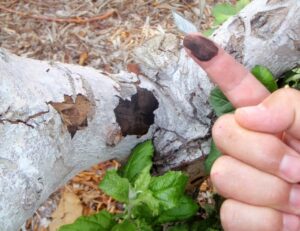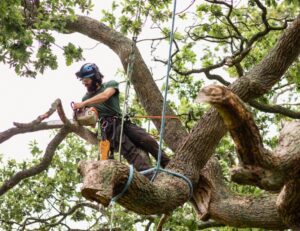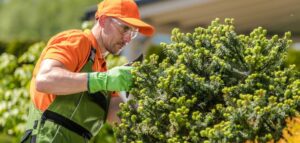In the arid landscapes of Phoenix, AZ, trees are a cherished part of our environment. However, these valuable assets are not immune to threats like sooty canker, a fungal disease that can silently endanger the health and vitality of your trees. At Trees for Needs, we’re committed to helping you safeguard your trees from this menace. In this guide, we’ll delve into the world of sooty canker, its identification, life cycle, and most importantly, how you can protect your trees from its grasp.
 Understanding Sooty Canker
Understanding Sooty Canker
Sooty canker, scientifically known as Neofusicoccum mangiferae or Hendersonula toruloidea, is a fungal disease that can affect various woody plant species, including citrus, mulberry, and walnut. Identifying its presence is crucial to mitigate its impact on your trees.
Identification
The first signs of sooty canker include bark cracking and the formation of cankers on the tree’s limbs. Infected limbs often exhibit sudden wilting, browning, and drying of leaves, which remain attached to the twigs even after death. You may notice damaged bark peeling off or tightly adhering to dead limbs. Cracked bark can ooze gum, and removing it might reveal black, powdery growth underneath, giving the disease its name.
Life Cycle
The Neofusicoccum fungus, responsible for sooty canker, typically infiltrates trees through wounds caused by various factors, including freezing, fertilizer burn, sunburn, or mechanical injuries like pruning. Spores produced on tree litter, dead leaves, twigs, and branches in the tree canopy are spread by splashing water and air movement, leading to infections when they come into contact with wounded host tissue.
Protecting Your Trees from Sooty Canker
Prevention
Preventing tree injuries is the first line of defense against sooty canker. Proper pruning to remove all diseased branches annually is essential. Trees also require good cultural care and a suitable growing environment to reduce the likelihood of severe damage, especially on water-stressed trees. Adequate soil moisture through proper irrigation throughout the growing season is crucial.
Early Recognition
Recognizing the symptoms of sooty canker early is key to managing this disease. Look out for dead areas of bark, browning and dying needles, or withering and falling leaves. The fungus’s growth each year results in distinctive light and dark areas, resembling “zebra” patterns, girdling the stems. As the outer bark erodes, the exposed interior bark turns powdery and black. Timely removal of infected plant material is essential.
Professional Assistance
Managing sooty canker can be challenging, and early recognition is crucial. If you suspect your trees are affected, don’t hesitate to seek professional assistance. At Trees for Needs, our certified arborists are well-equipped to diagnose, treat, and manage sooty canker to protect the health and longevity of your trees.
Contact Trees for Needs Today
Don’t let sooty canker compromise the beauty and health of your trees. For certified arborists in Phoenix, AZ, and expert guidance on tree diseases like sooty canker, contact Trees for Needs. Our team is dedicated to preserving the natural beauty of the Phoenix area while providing safe and efficient tree care services. Don’t delay; let us help you protect your trees and ensure the safety and aesthetics of your property.



